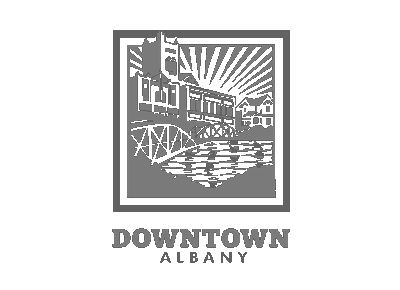Floodplains are a natural component of the city of Albany environment. Floodplains are scenic, serve as valued wildlife habitats, and are suitable for farming. Flooding in streams is a natural process. Vegetation serves as a natural filter, trapping sediments and capturing pollutants; it also anchors stream banks, reducing bank erosion and providing shade, which helps reduce water temperatures. Here are some suggestions to support natural floodplains functions:
Preserve and restore native vegetation and trees to reduce flood damage
Recognizing the natural and beneficial functions of floodplains can help to reduce flooding.
Keep it clear, keep it clean
Keep storm drains, ditches, and waterways clean from debris and pollutants to reduce damage from floods.
- Learn more about the Keep the Storm Drain Clean program.
- Learn more about Stormwater
Dumping or debris
If you see dumping or debris in ditches, creeks, or drains, contact the Public Works Department at 541-917-7600.
Benefits of Healthy floodplains
Maintaining or protecting the Floodplains benefits to people and nature.
Flood Protection
Floodplains provide a river more room as it rises, thereby reducing pressure on manmade flood protection structures, like levees and dams.
Improved Water Quality
When inundated with water, floodplains act as natural filters, removing excess sediment and nutrients, which can degrade water quality and increase treatment costs. Degradation of water quality due to the loss of floodplain habitat can be noted along smaller rivers and at-scale at large river basins. At the largest of scales are hypoxic or “Dead” zones, which are areas in bays or gulfs where little life exists due to excess nutrients carried by rivers.
Recharged Aquifers
Outside of a river’s main channel, water flow is slowed and has more time to seep into the ground where it can replenish underground water sources (or aquifers), which serve as a primary source of water for many communities and which are critical for irrigation that grows much of the world’s crops.
Improved Wildlife Habitat
Floodplains are home to some of the most biologically rich habitats on Earth. They provide spawning grounds for fish and critical areas of rest and foraging for migrating waterfowl and birds.
Recreational Industries
Many outdoor recreational activities – like fishing, hunting, camping, hiking, wildlife watching and boating – are made possible by or greatly enhanced by the natural processes of rivers and healthy floodplains. Combined, these recreational activities account for billions of dollars in economic activity in the United States and are important sources of income for most nations around the globe.
Volunteer Opportunities
Volunteer opportunities and events related to watershed health.
Water Quality and Watershed Health
Total Maximum Daily Load (TMDL) document related activities to help protect the river and improve watershed health.


